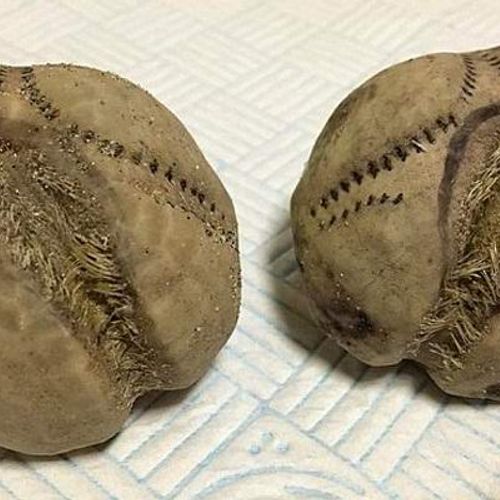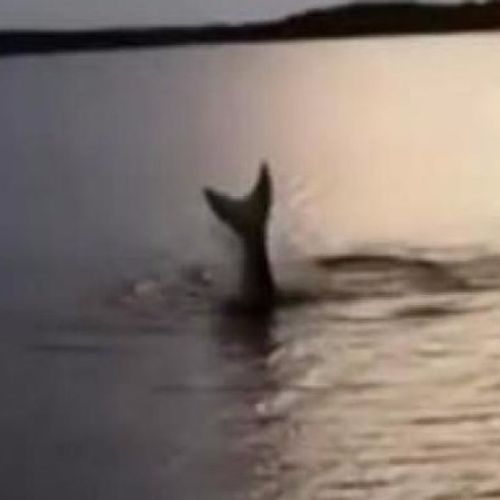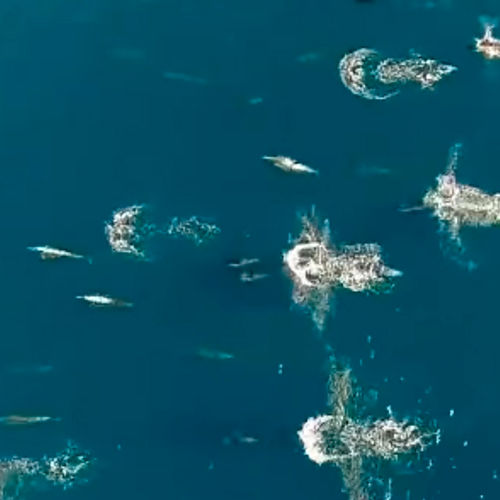| ID | #1689511529 |
| Added | Sun, 16/07/2023 |
| Author | July N. |
| Sources | |
| Phenomena | |
| Status | Investigation
|
Initial data
A creature very similar to a "mermaid" was found on one of the Australian beaches. Bobbi-Lee Oates described the creature as having a skeleton resembling a mermaid in shape. Especially her attention was attracted by the skull, which seemed to her eerily similar to a human. Oates and her companions, who discovered these strange remains, were left perplexed by what they saw.
The pictures accompanying the Oates message show a creature with a humanoid skull." Oates estimated the creature's length at about 1 meter 82 cm and noted its hairline, which resembles a cow or kangaroo in color. However, the hair was missing in several places due to decomposition.
Most of all, everyone was struck by the resemblance to the body of a mermaid. In search of answers, Oates turned to specialists, hoping that someone would be able to shed light on the identity of this creature.
Animal experts have expressed their opinion: Rob Deville, project manager of the British Cetacean Discovery Investigation program, suggested that the remains most likely belong to a small cetacean. However, he was unable to give a definitive answer.
Oates remains in the dark about the true nature of this creature. She expressed her disappointment that she had not received a definitive answer from scientists about what it could be.
Original news
Właśnie na australijskim wybrzeżu odkryto coś, co przypominało morskie legendy. Bobbi-Lee Oates, która natknęła się na tajemnicze stworzenie, opisuje je jako szkielet, który najbardziej przypominał jej... syrenę. Szczególnie zwróciła uwagę na czaszkę, której forma była niepokojąco zbliżona do ludzkiej.
Fotografie, które Oates opublikowała w swojej wiadomości, ukazują zaskakująco ludzką czaszkę. Na podstawie obserwacji Oates oceniła, że długość stworzenia wynosi około 1 metra 82 cm. Zauważyła również linię włosów, która przypominała jej kolorystykę krowy lub kangura, choć w kilku miejscach włosy były zniszczone.
To, co jednak najbardziej zaskoczyło Oates i jej towarzyszy, to niezaprzeczalne podobieństwo do ciała syreny, jakie wyłaniało się z tego nieznanego stworzenia. Poszukując odpowiedzi na pytanie, co to może być, Oates zdecydowała się zwrócić do specjalistów.
Jeden z nich, Rob Deville, kierownik projektu w brytyjskim programie badań nad waleniami, wyraził swoją opinię na temat tajemniczego znaleziska. W jego mniemaniu, szczątki najprawdopodobniej należą do małego walenia, jednak nie był w stanie udzielić jednoznacznej odpowiedzi.
Niejasne wyniki badań i brak konkretnych informacji rozczarowały Oates, która wciąż szuka odpowiedzi na pytanie, co tak naprawdę odkryła na australijskiej plaży. Czy to stworzenie było dowodem na istnienie morskich legend, które od zawsze fascynowały ludzkość, czy też to tylko zbieg okoliczności, który przywołał w naszych umysłach te fantastyczne opowieści?
Tymczasem tajemnicza syrenka z Australii stała się nowym wyzwaniem dla naukowców, a zagadka wciąż pozostaje nierozwiązana. Wkrótce może okaże się, że morskie opowieści nie są tak odległe od rzeczywistości, jakbyśmy mogli myśleć. Czy naukowcy zdołają rozwikłać tę tajemnicę, a może odkrycie Oates zostanie na zawsze niewyjaśnione? Czas pokaże.
Hypotheses
Famous creatures

There are a huge number of different living organisms on our planet. According to recent estimates, the number of species of organisms on our planet is approximately 7-10 million. However, only 15% of the data are described today.
According to the calculations of Canadians, 2.2 million species live in the world's oceans, 6.5 million on land. There are only about 7.8 million species of animals on the planet, 611 thousand fungi, and 300 thousand plants.
Post-mortem changes

Because ordinary people are rarely familiar with the nuances of postmortem changes in organisms, it can often take them for something mystical.
Gray meat flies eat rotting tissue, leaving a sharp edge. This explains the "surgical" removal of organs and parts of the skin. However, such behaviors of the flies many take for the interference of aliens or attacked by unknown creatures.
The main signs of this injury:
Events
Rocket launches (from space.skyrocket.de)
- Site: Cape Canaveral Air Force Station, Eastern Test Range, Cape Canaveral, Florida (USA) Vehicle: Falcon-9 v1.2 (Block 5) Payload: Starlink v1.5 G5-15-1 Starlink v1.5 G5-15-2 Starlink v1.5 G5-15-3 Starlink v1.5 G5-15-4 Starlink v1.5 G5-15-5 Starlink v1.5 G5-15-6 Starlink v1.5 G5-15-7 Starlink v1.5 G5-15-8 Starlink v1.5 G5-15-9 Starlink v1.5 G5-15-10 Starlink v1.5 G5-15-11 Starlink v1.5 G5-15-12 Starlink v1.5 G5-15-13 Starlink v1.5 G5-15-14 Starlink v1.5 G5-15-15 Starlink v1.5 G5-15-16 Starlink v1.5 G5-15-17 Starlink v1.5 G5-15-18 Starlink v1.5 G5-15-19 Starlink v1.5 G5-15-20 Starlink v1.5 G5-15-21 Starlink v1.5 G5-15-22 Starlink v1.5 G5-15-23 Starlink v1.5 G5-15-24 Starlink v1.5 G5-15-25 Starlink v1.5 G5-15-26 Starlink v1.5 G5-15-27 Starlink v1.5 G5-15-28 Starlink v1.5 G5-15-29 Starlink v1.5 G5-15-30 Starlink v1.5 G5-15-31 Starlink v1.5 G5-15-32 Starlink v1.5 G5-15-33 Starlink v1.5 G5-15-34 Starlink v1.5 G5-15-35 Starlink v1.5 G5-15-36 Starlink v1.5 G5-15-37 Starlink v1.5 G5-15-38 Starlink v1.5 G5-15-39 Starlink v1.5 G5-15-40 Starlink v1.5 G5-15-41 Starlink v1.5 G5-15-42 Starlink v1.5 G5-15-43 Starlink v1.5 G5-15-44 Starlink v1.5 G5-15-45 Starlink v1.5 G5-15-46 Starlink v1.5 G5-15-47 Starlink v1.5 G5-15-48 Starlink v1.5 G5-15-49 Starlink v1.5 G5-15-50 Starlink v1.5 G5-15-51 Starlink v1.5 G5-15-52 Starlink v1.5 G5-15-53 Starlink v1.5 G5-15-54 Starlink v1.5 G5-15-1, ..., G5-15-54
Investigation
Meanwhile, biodiversity experts believe that the remains belong to some kind of marine mammal. "It definitely looks like a small cetacean to me," suggested Rob Deville, project manager of the British Cetacean Research Program at the Zoological Society of London, after viewing the photos. According to Helen Marsh, emeritus professor at James Cook University, it was a decomposed marine mammal, most likely a seal. "The most likely marine mammals of this size could be dolphins and very rare seals," she said.
and more:
Bobbi-Lee Oates, one of those who discovered the carcass on the shore, shared the pictures with several oceanographers. Experts' opinions are divided. So, Brittany Holmes claims that in its structure it does not look like a dolphin, a seal, or a relatively large fish. However, she refused to believe in the existence of a mermaid, citing the poor degree of preservation of the body.
Another specialist, Rob Deville, believes that the photo shows a baby cetacean creature. Moreover, he said that it was possible that this was a stillborn baby whale with a congenital pathology, which is why the skull acquired features similar to a human one.
and more:
The "tail" is a long bone, not like a vertebrate bone, which makes me believe that it's actually a leg, the ribs are thick, and the animal is quite hairy, so I think it's really a crippled kangaroo," the user commented.
Resume
Similar facts
Log in or register to post comments









